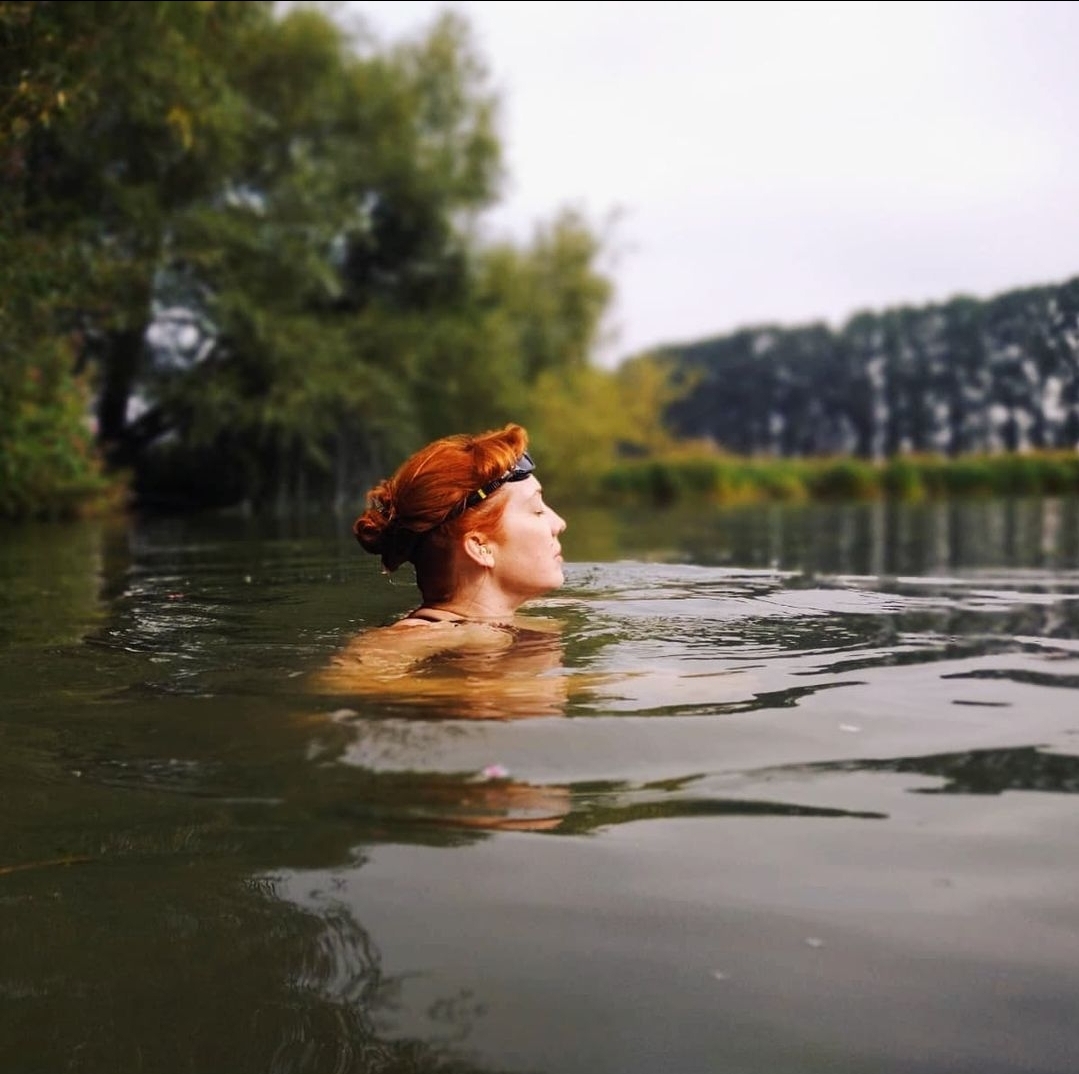"The argument we're all going to drown the minute we get in is ridiculous"- swimmers take to the water to fight reservoir ban
Protesters trespass en masse to call for open access to clean water

Swimmers fighting for access to off-limit lakes and reservoirs have taken to the water in protest.
Members of the Outdoor Swimming Society and other swimmers breached sites across England and Wales last weekend to highlight the lack of access to the 2,000 lakes and reservoirs owned by water companies where swimming is forbidden.
The annual protest was inspired by the original Kinder Trespass of 1932, which saw walkers invade private land en masse - and get arrested for their troubles. That action eventually led to the opening up of the British countryside, and now swimmers are calling for the same rights.
Water companies have come under fire for wide spread pollution of rivers and lakes, to the point where many are now dangerous to swim in. Meanwhile, large reservoirs of drinking water, also owned by water companies, remain off limits, despite a huge increase in the number of wild swimmers in the UK.
Kate Rew, founder of the Outdoor Swimming Society, was one of about 20 swimmers who climbed a fence at Chew Valley Lake in Somerset at the weekend. She told Advnture: "We have got so many swimmers in the country now and not enough places to swim. And reservoirs just seem to be the easiest place we could get a large max unproblematic access.
"When reservoirs were privatized it was a condition of privatization that they [water companies] made their spaces available for recreation. And while water authorities have done that with sailing and fishing and boating and windsurfing or walking or cycling, they just haven't done it with swimming."

Kate continued, "You have this ridiculous situation that everyone thinks it’s just so dangerous that you can’t let anyone in the water.
All the latest inspiration, tips and guides to help you plan your next Advnture!
"And that obviously, patently isn’t the case any more. England is absolutely full of people looking after their mental and physical health, and just enjoying life via swimming, So I don't think the argument we’re all going to drown the minute we get in a reservoir … it’s just ridiculous."
Kate emphasized the need for access to open water for people living in towns and cities.
"The thing about reservoirs is that they are often near larger urban areas. So that's often obviously where there’s a big need for somewhere to swim [and] less places to wild swim. There's often parking. Because people come here just to look at the water and feed the birds and eat an ice cream.
"They’re just convenient and so it feels really important that we start putting a bit more pressure on water authorities and raise more awareness."
Water companies remain seemingly determined to ban swimmers from their lakes and reservoirs, citing danger from hidden obstacles, currents, and cold deep water.
A spokesperson for Bristol Water, which owns and operates Chew Valley Lake, told Advnture: “Our reservoirs are active operational sites supplying water to our region. They contain deep, cold water and hidden hazards like strong currents beneath the surface."

Swimmers from Sheffield Outdoor Plungers trespassed at Bottoms Reservoir in Derbyshire, and shared images of the event on Instagram.
A post shared by Sheffield OUtdoor Plungers (@soup_sheffieldoutdoorplungers)
A photo posted by on
Swimmers in Scotland have enjoyed open access to reservoirs for the last 20 years.
Advice for swimmers there who decide to swim in reservoirs includes:
- The sides of reservoirs are often steep, making it relatively easy to get into water but harder to get out. Always establish a safe exit point before getting in.
- Never jump into a reservoir. There may be hidden pipes and other objects.
- Avoid buoys, which may mark the site of aerators. Aerators are designed to keep the water ecologically balanced by pumping in air, but their presence also means the water may be less dense, making it harder than normal for swimmers to stay afloat.
- Stay away from dams and towers. These may have underwater structures nearby, but, more importantly, pumps near reservoir towers can actually pull swimmers under, and dams have spillways where water is released. Both pose a real danger.
- Reservoirs are deep, but there may also be unexpected changes of depth.
- Blue green algae can build up at the edges of reservoirs and this is a cyanobacteria that can be very dangerous to humans and animals. Don't swim anywhere near it.
- How to stay safe in open water
- The best wild swimming spots: find the perfect place to take the plunge near you

Rosee Woodland developed a taste for adventure at a young age, growing up in a home where camping was the default holiday, and good weather was a vacation bonus rather than a necessity. After bike-packing the length of France in her mid teens with her family, she started to undertake solo forays in her 20s, usually without the benefit of much technical gear at all. Happily, the years she later spent as a mountain biking journalist eventually gave her an appreciation of decent kit! These days she loves a water-based adventure, and is an outdoor swim coach, and a keen free diver. She has a soft spot for Northern Ireland's Mourne mountains, and can also be found hiking and kayaking in Pembrokeshire and the South West of the UK.
